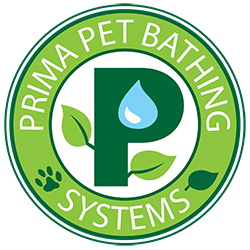The Importance of Regular Maintenance for Pet Care Equipment
- Paul Schildan
- Mar 25
- 4 min read
As a pet owner, you invest a lot in maintaining the health and happiness of your furry friends. Whether it’s grooming tools, feeding devices, or play equipment, your pet care equipment serves a vital role in their well-being. Regular maintenance of these tools is not just a task; it’s essential to ensure your pets are safe and healthy. Let's explore why maintaining your pet care equipment is crucial and how to go about it effectively.
Equipment Maintenance: Why Is It Important?
Proper maintenance of pet care equipment has several benefits. First and foremost, it helps extend the lifespan of the tools. Regular checks and upkeep can prevent small issues from becoming significant problems, ultimately saving you money on repairs or replacements. A well-maintained grooming tool, for instance, will provide better results than a neglected one.
Moreover, equipment that is in good condition promotes better hygiene. For example, a dirty pet bowl can lead to bacterial growth, which can harm your pet's health. Regular cleaning and maintenance of feeding devices are essential in preventing infections and illnesses. Safety is another crucial factor; equipment that’s poorly maintained can lead to accidents. A broken leash or frayed collar can pose serious risks during walks.

Understanding Your Equipment
Before diving into the specifics of maintenance, it’s essential to understand the Equipment you are using. Pet care equipment can range widely, including grooming tools, toys, feeding dishes, and even tech devices like pet cameras or automatic feeders. Each type has its own set of maintenance needs.
For grooming tools, such as clippers or brushes, regular cleaning and sharpening are vital to keep them functioning effectively. Feeding devices may need disassembly for thorough cleaning, while toys often require inspection for wear and tear to ensure they are safe for your pet to use.
If you’re using high-tech devices, ensure you follow the manufacturer’s guidelines for maintenance, as these often include software updates as well. Understanding the specifics of your equipment allows you to tailor your care approach and ensure longevity.

What Are the Three Types of Equipment Maintenance?
Maintaining your pet care equipment can be categorized into three types: corrective maintenance, preventive maintenance, and predictive maintenance. Here’s a breakdown of each type:
Corrective Maintenance
This type refers to repairs made after a piece of equipment has failed or broken down. For example, if a grooming clipper suddenly stops working, corrective maintenance will involve figuring out the problem—be it a dull blade, a dead battery, or something else—and addressing the issue. While this type of maintenance is crucial, relying on it alone is not advisable.
Preventive Maintenance
Preventive maintenance is the proactive approach to keeping your equipment functioning optimally. It includes regular cleaning, routine checks, and necessary repairs before anything breaks down. For pet owners, this could mean planning monthly cleaning sessions for grooming tools and feeding devices to ensure they remain in tip-top shape.
Predictive Maintenance
Predictive maintenance uses data and analytics to predict when equipment is likely to fail. This is where technology plays a significant role. Smart pet devices often have apps that can notify you when it’s time for maintenance based on usage patterns or performance metrics. While this type may not apply to traditional grooming tools, it can significantly enhance the upkeep of modern tech-enabled pet products.
Practical Tips for Regular Maintenance
Now that you understand the types of maintenance, here are actionable tips to keep your pet care equipment in excellent shape:
Create a Maintenance Schedule
Establish a maintenance schedule that fits your routine. This can include weekly cleanings for feeding bowls and monthly checks for grooming tools. Write it down and keep it visible as a reminder.
Invest in Quality Tools
High-quality equipment tends to last longer and often requires less maintenance. When purchasing new grooming tools or feeding devices, consider investing in reputable brands that provide durability and ease of maintenance.
Keep a Cleaning Kit
Maintain a cleaning kit specifically for your pet care equipment. It should include items like brushes for grooming tools, mild soap for feeding devices, and microfiber cloths for a thorough clean. Keeping everything in one place makes the process more efficient.
Know When to Seek Professional Help
Sometimes, equipment issues are beyond what you can handle. Knowing when to consult an expert is crucial. Professional services, such as an equipment maintenance service, can ensure your tools are serviced correctly when needed.

The Impact of Neglect on Pet Care Equipment
Neglecting routine maintenance can have severe repercussions. A study showed that improper care of pet grooming tools can lead to an increased risk of skin infections in pets due to unclean or dull blades. Similarly, dirty feeding bowls can prompt digestive problems.
The wear and tear on toys can result in broken pieces that could be swallowed, causing choking hazards. Recognizing the importance of regular maintenance protects your pet’s safety and health and encourages responsible pet ownership.
Staying Informed
The landscape of pet care equipment is continually evolving. Staying informed about new products and maintenance techniques can improve your approach to caring for your pets. Subscribe to pet care blogs, attend workshops, or follow pet care experts on social media to learn the best practices and industry innovations.
Final Thoughts
In summary, regular maintenance of pet care equipment is more than just a chore; it's an essential aspect of responsible pet ownership. By understanding your equipment and its maintenance needs, creating a schedule, and knowing when to seek professional help, you can ensure your pet's tools remain reliable and safe. Prioritize your pet's health and happiness by committing to regular maintenance. Your furry friends will appreciate it!
Happy pet caring!

